- 翰林提供学术活动、国际课程、科研项目一站式留学背景提升服务!
- 400 888 0080
CIE A Level Biology复习笔记8.1.5 Cells of the Blood
Cells of the Blood
- Blood is a tissue composed of a number of important specialised cells
- Red blood cells, monocytes, neutrophils and lymphocytes all have distinguishable structures which enable them to be recognised on microscope slides, in photomicrographs and in electron micrographs
Red blood cells
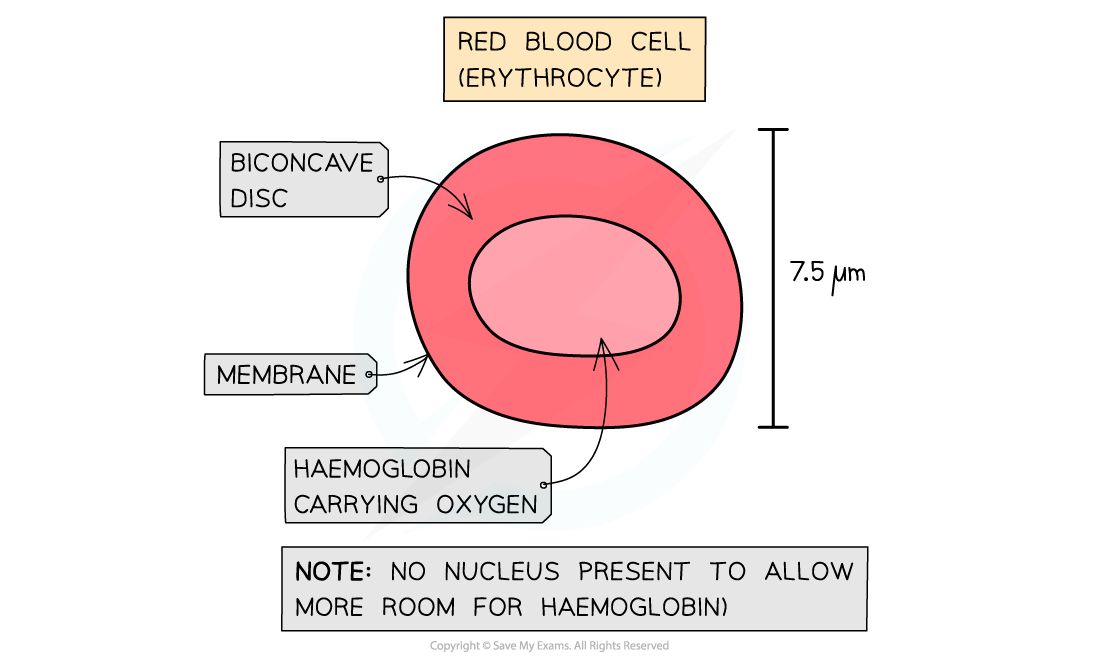 Red blood cell
Red blood cell
- There are approximately 5 million red blood cells per mm3 of blood
- Red blood cells contain haemoglobin, a protein with a quaternary structure that contains haem iron groups which can bind reversibly to oxygen
- Distinctive features of erythrocytes when viewed under a microscope, are their distinctive biconcave disc shape (caused by their lack of nucleus)
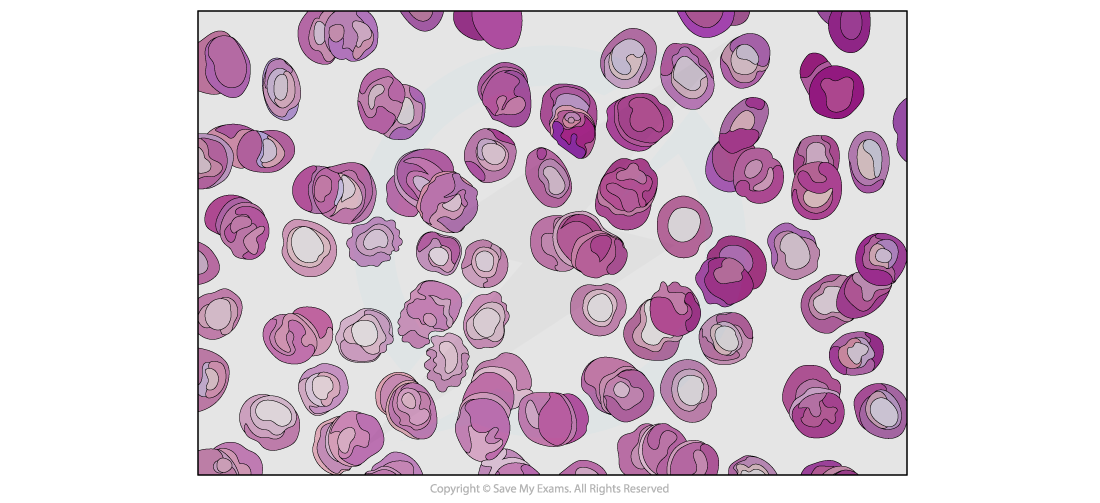 Red blood cell micrograph
Red blood cell micrographMonocytes
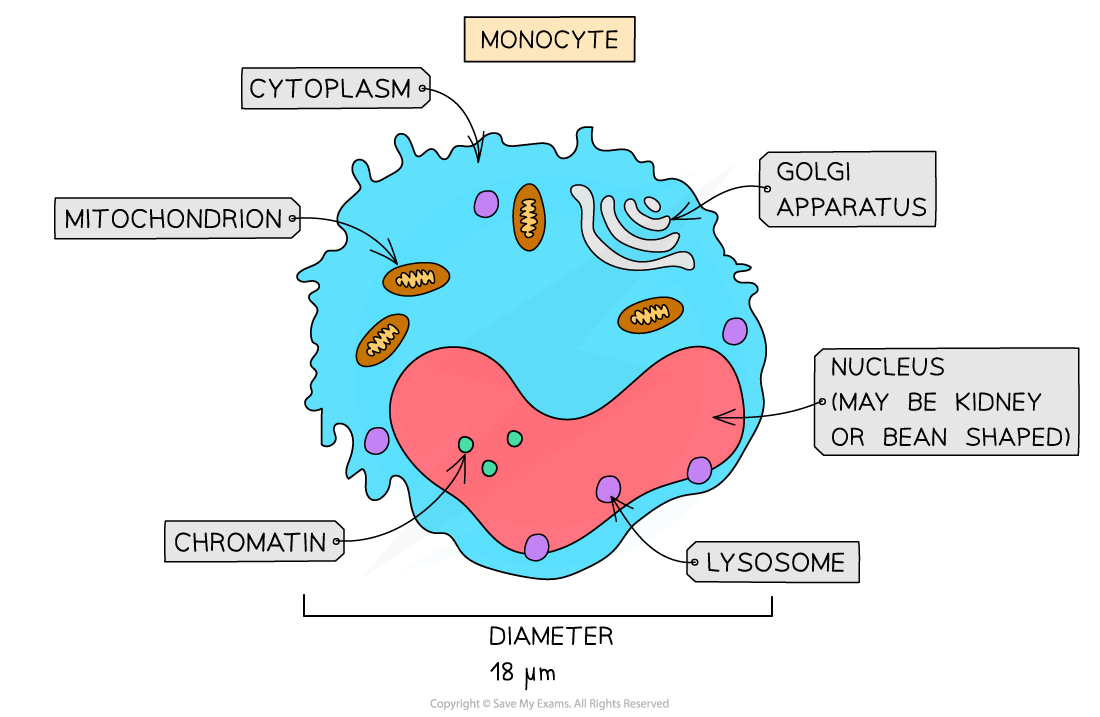 Monocyte
Monocyte
- Monocytes are identifiable by their size – they are the largest of the leukocytes and have a nucleus shaped like a kidney or a bean
- The nucleus of monocytes tends to appear lighter after staining than other leukocytesThe nucleus should appear a light blue colour, while the chromatin inside is distinct and fine
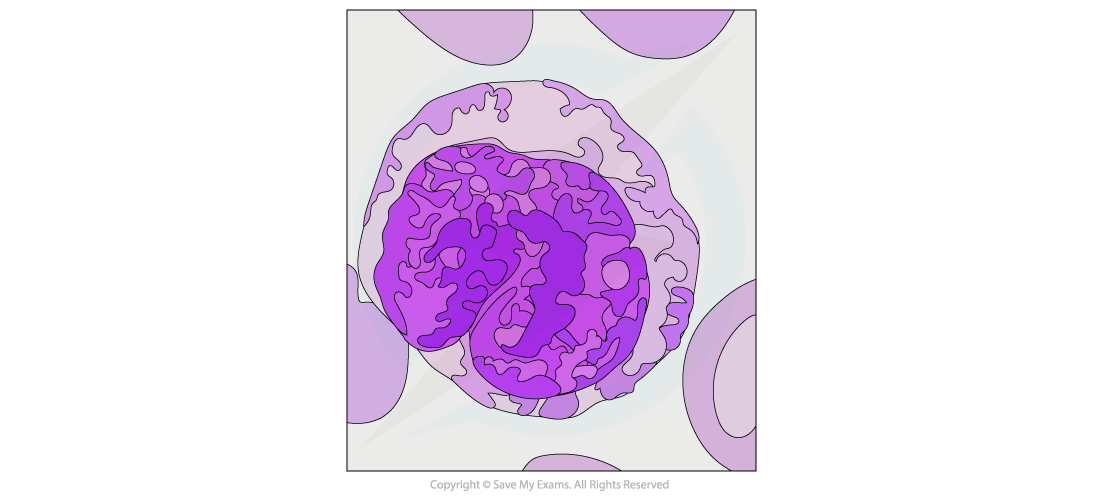 Monocyte micrograph
Monocyte micrographNeutrophils
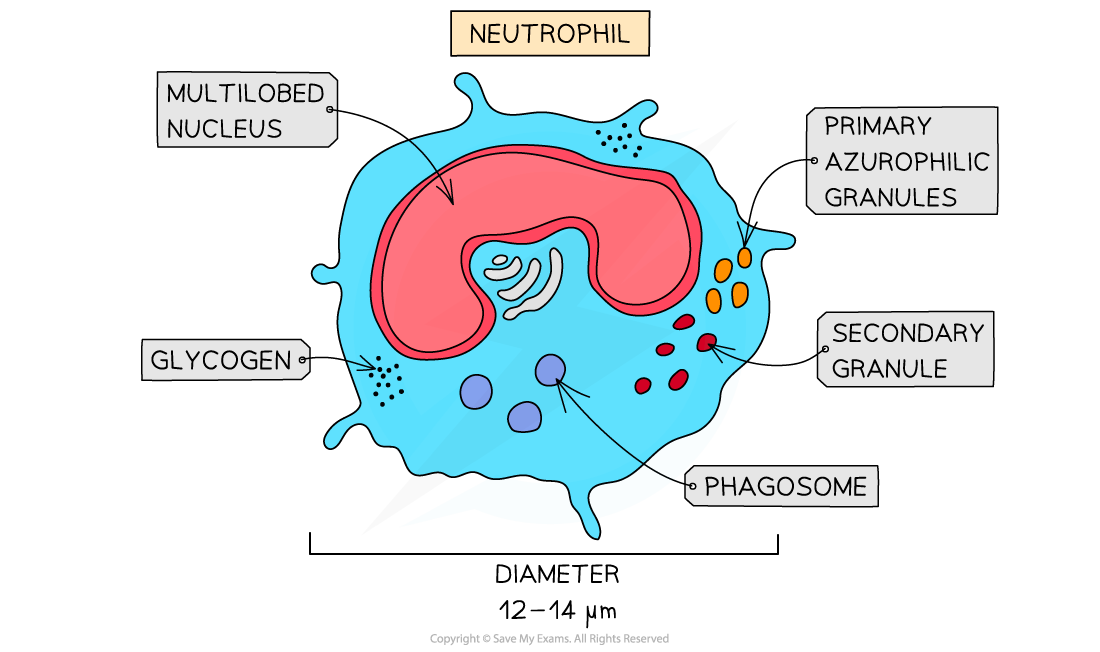 Neutrophil
Neutrophil
- Neutrophils are distinguished by their multi-lobed nuclei
- Up to 70% of all leukocytes are neutrophils – this makes them easy to spot on a micrograph
- The granules of neutrophils typically stain pink or purple-blue
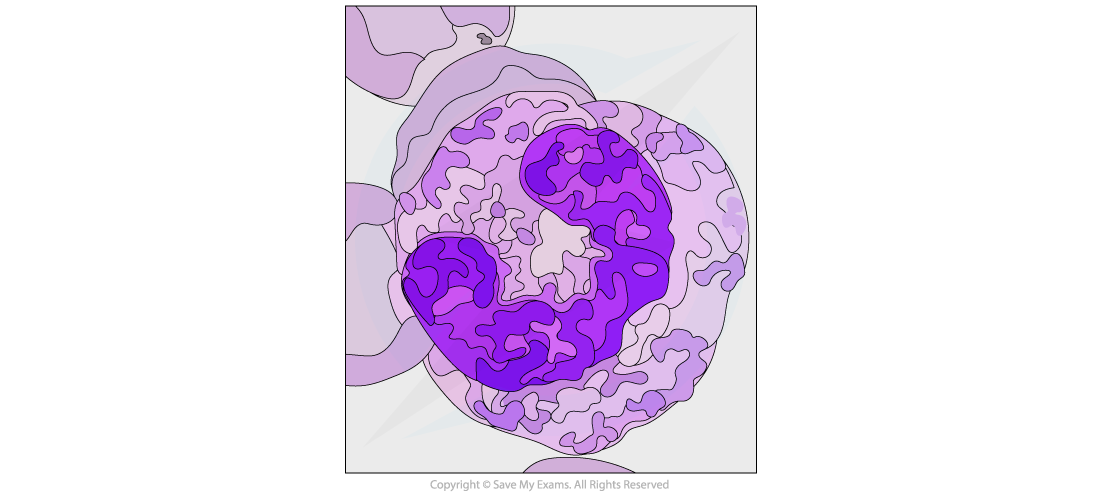 Neutrophil micrograph
Neutrophil micrographLymphocytes
 Lymphocyte
Lymphocyte
- Lymphocytes are small leukocytes that are identifiable by their very large nuclei, which typically stains a dark colour
- Lymphocytes constitute around 20-25% of all leukocytes
- Lymphocytes are around the size of red blood cells
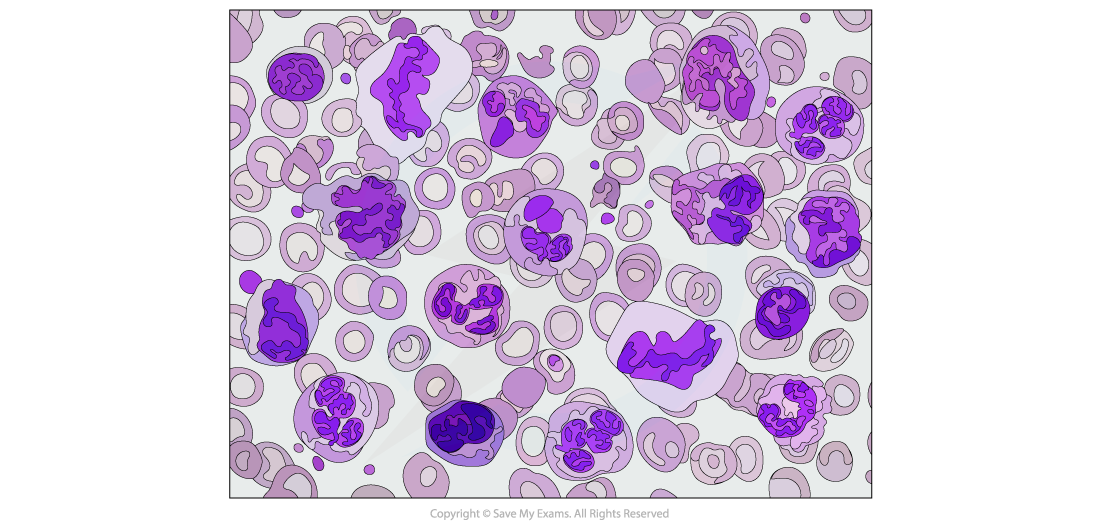 Lymphocyte micrograph
Lymphocyte micrographExam Tip
When looking at micrographs, ensure you distinguish between the kidney-shaped nucleus of a monocyte and the multi-lobed nucleus of a neutrophil, as these can appear similar at first. As with all things, practice is key here!
转载自savemyexams

早鸟钜惠!翰林2025暑期班课上线

最新发布
© 2025. All Rights Reserved. 沪ICP备2023009024号-1








